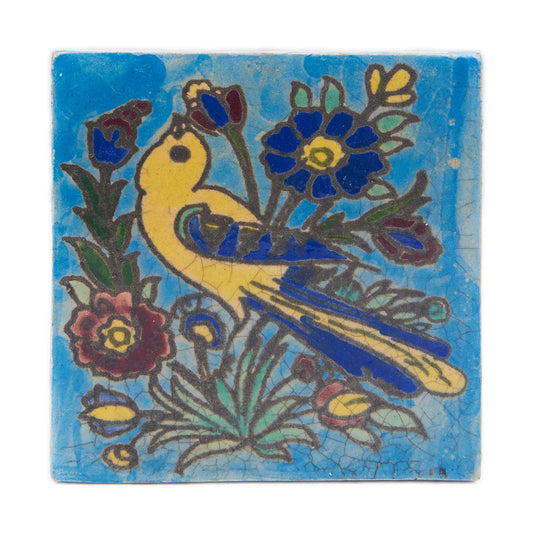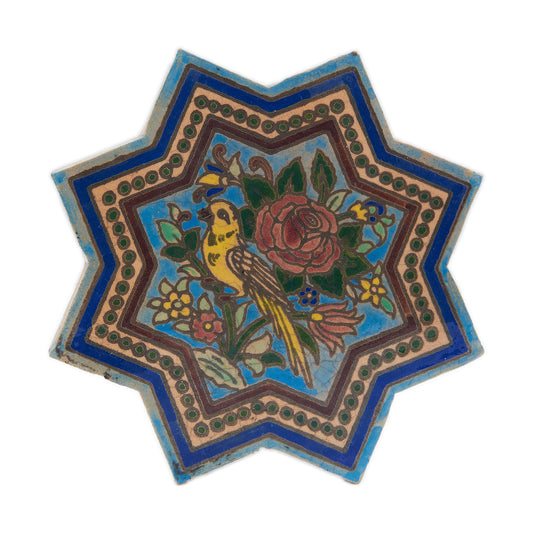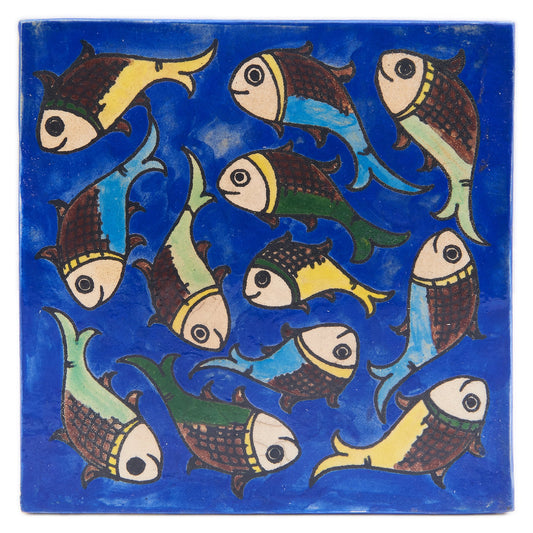Persian tiles have long been admired for their exquisite beauty and cultural significance. Their intricate designs and historical roots tell the story of an ancient art form that has shaped the very fabric of Persian architecture. Drawing inspiration from "Persian Tiles", a publication by The Metropolitan Museum of Art, this blog explores these remarkable creations' rich history and artistry. From their earliest beginnings to their lasting influence on modern architecture, Persian tiles offer a fascinating glimpse into the evolution of design and craftsmanship in Persia.
A Journey Through Time: The History of Persian Tilework
Tilework has been pivotal in Persian architecture, adorning everything from religious buildings to royal palaces. The earliest known tiles date back to the 13th century B.C. in Choga Zanbil, Khuzestan, and later in the 7th and 6th centuries B.C. at Baba Jan Tepe in Luristan. However, it wasn’t until the 9th century that tile production truly flourished, with the rise of luster tiles around 836 A.D. Through the centuries, Persian tilework evolved, influenced by the reigns of dynasties such as the Seljuks, Ilkhanids, Safavids, and Qajars, each adding their unique touch to this timeless craft.
Mastering the Craft: Techniques Behind Persian Tilework
The artistry behind Persian tiles is deeply rooted in various techniques, each bringing its level of complexity and beauty. Some of the most notable techniques include:
- Molded and Glazed: Early tiles were simple yet elegant, molded and glazed with basic geometric patterns.
- Polychrome Luster Tiles: Known for their lustrous finish and vibrant colors, these tiles became prominent in the 9th century.
- Minā'ī (Overglaze Enamel Painting): Popular in the 12th and 13th centuries, this technique involved painting over a fired glaze to create detailed, vibrant scenes.
- Lajvardina: A technique known for adding red, black, brown, and white overglaze, followed by glazing, creating a rich, colorful effect.
- Cuerda Seca: A more economical method that used manganese-mixed grease lines to separate colors, preventing them from blending during firing.
- Underglaze Painting: This technique gained popularity during the Qajar period and allowed more detailed designs.
Decorative Motifs: Symbols of Culture and Heritage
Persian tiles are not just works of art but stories in themselves. The designs on these tiles reflect the cultural, religious, and political shifts of the time. Some of the most common motifs include:
- Geometric Patterns: A hallmark of early Persian tilework, geometric shapes and symmetry were central to the design.
- Figural Representations: Over time, tiles began to feature animals, humans, and mythological scenes, reflecting the culture and courtly life.
- Vegetal Designs: Floral patterns, arabesques, and scrolls were frequently used to symbolize growth, beauty, and life.
- Inscriptions: Arabic calligraphy often appeared on tiles, including Qur'anic verses and poetry. The famous basmala ("In the name of God...") was a standard inscription.
- Imperial Symbolism: During the Ilkhanid period, tiles often featured dragons, phoenixes, and other imperial symbols, influenced by Mongol art.
The shapes and layouts of tiles also played a key role in Persian design. Star-shaped, hexagonal, and rectangular tiles were used to create intricate patterns on walls, dado panels, and mihrabs—elevating the beauty of architectural spaces.
Dynasties and Their Influence: Shaping the Future of Tilework
Persian tilework was shaped by the rise and fall of various dynasties, each leaving its own imprint on the art form. Historical events, such as the Mongol invasions, caused periods of devastation, but tile production quickly revived, bringing new styles and forms to the forefront.
- Ilkhanid Period: Known for lusterware, monochrome glazes, and intricate depictions of Chinese-inspired scenes.
- Safavid Period: Popularized the cuerda seca technique, with panels often showcasing royal palaces.
- Qajar Period: Tiles from this era frequently depicted human figures, especially royalty, and incorporated cuerda seca and underglaze painting techniques.
Conclusion: The Legacy of Persian Tilework
The legacy of Persian tiles is not just in their artistry, but in how they mirror their time's cultural, social, and political changes. Here are a few quotes from "Persian Tiles" that underscore their importance and historical significance:
- "Many of the Persian tiles in the Museum's collection have been considered before in the context of Islamic ceramic history, an entirely justifiable approach."
- "Tilework has been widely used to adorn the surfaces of Persian architecture since ancient times."
- "In conclusion, we have seen that tilework closely mirrors contemporary pottery techniques, reflects the changing tastes of patrons, and reveals the function of the buildings on which tiles were set."
From their origins as simple, geometric adornments to their transformation into intricate, colorful masterpieces, Persian tiles continue to be a testament to Persia's rich cultural history and craftsmanship. Their beauty endures, leaving a legacy that inspires architecture and design today.




